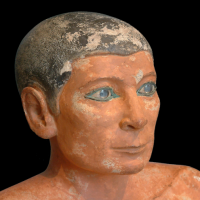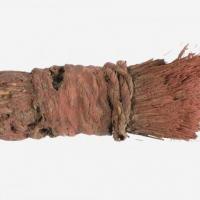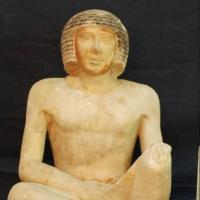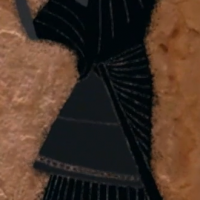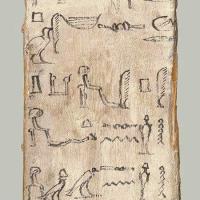Takabuti, The Ulster Museum Egyptian Mummy (2009)
Takabuti (The Egyptian Mummy) lived during the 25th dynasty c660BC. She came to the museum in 1834 and was unwrapped in February 1835. She is located in the Life & Death of Ancient Egypt Gallery(13).
The mummy of the lady Takabuti and her case represent the Egyptian collection of some 2000 objects. She was a married lady of about thirty years of age and she lived in the important city of Thebes at the end of the Twenty-Fifth Dynasty.
Takabuti and her case
The Egyptian mummy Takabuti and her case were brought back from Thebes by Mr Thomas Greg of Ballymenoch House, Holywood. Her arrival was eagerly awaited by the members of the Belfast Natural History & Philosophical Society, whose museum in College Square North was to be her new resting place.
As was the custom of the day, she was unwrapped on 27 January 1835 in front of specially invited members of the Society. In attendance were medical men and the celebrated Rev. Dr Edward Hincks who was rector of Killyleagh Parish Church for forty years. He was an expert in the decipherment of Egyptian hieroglyphs and Mesopotamian cuneiform writing.
He was able to tell the assembled company that her name was Takabuti and that she was a married woman of between 20 and 30 years of age and the mistress of a great house. Her father was a priest of Amun and was called Nespare, while her mother was called Tasenirit. The excellent degree of mummification and the fact that she had been buried in the large cemetery on the Western side of Thebes showed that she was a woman of wealth and importance. Her burial took place at the end of the Twenty-Fifth Dynasty, c660 BC. Her little cape of faience beads was the burial fashion at this date. When she was re-wrapped, her face, arm and foot were left uncovered and she has remained this way ever since.
The local newspapers told the general public that they could first see Takabuti on 30 and 31 January and on 2, 4 and 6 February. She was a sensation and it is recorded that, at Easter 1835, the large public crowds never tired of inspecting her. Her fascination for visitors has never waned and today she is well known as the noble representative of a great ancient civilisation. "
